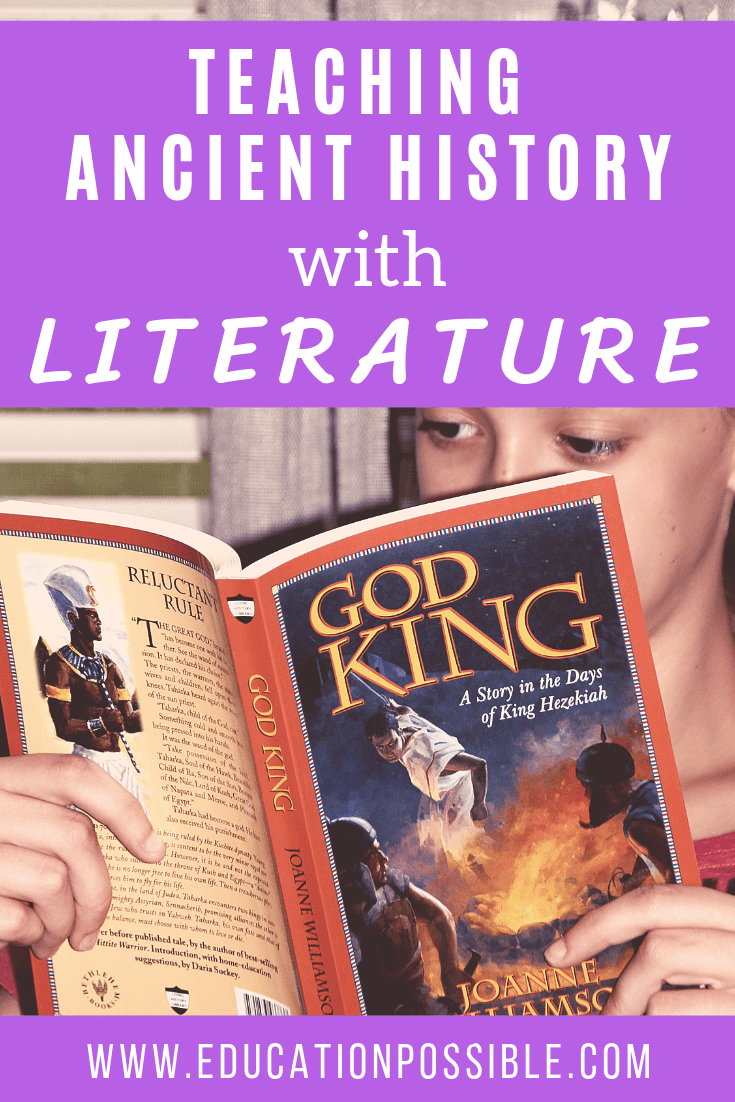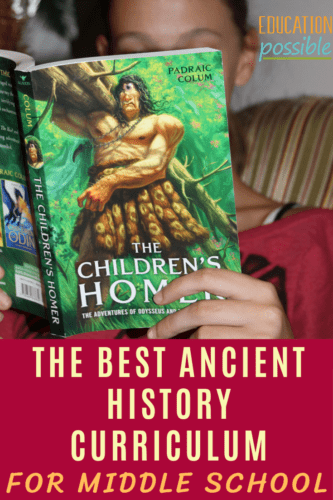Teaching Middle Schoolers Ancient History Through Literature
If you are looking for quality ancient history lesson plans that don’t rely on textbooks, I have the perfect curriculum for you. Instead of learning a bunch of dates and random facts, middle schoolers will be immersed in history through stories and hands-on activities.
History will be anything but boring when you use Beautiful Feet in your homeschool.
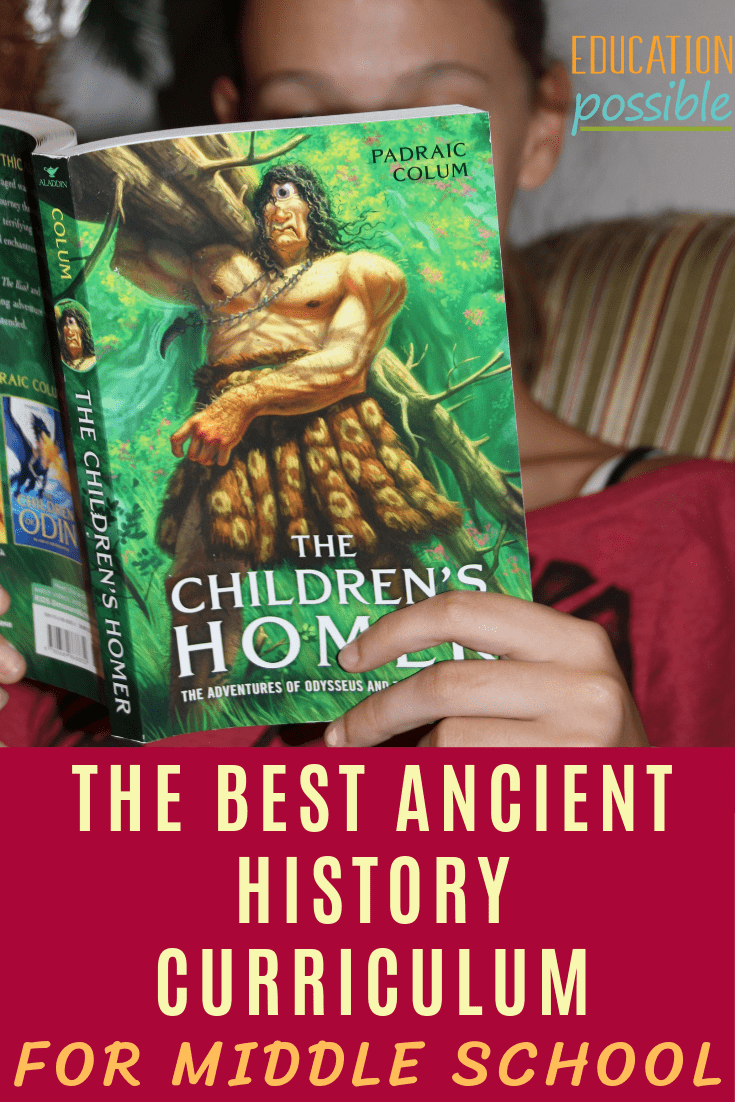
I received the books from the first half of the Ancient Intermediate course for free in exchange for writing about my experience and was also compensated for my time. I was not required to post a positive review. These are all the honest opinions of myself and my teens, who have used this curriculum for years and love it. This post contains affiliate links.
Best Homeschool History Curriculum
The main thing that sets Beautiful Feet’s history curriculum apart from others is its reliance on literature, instead of using a textbook as a spine. Students spend time looking at articles, personal stories, historical fiction, and more.
Or as my kids like to say, they’re reading cool and interesting books instead of dry, boring textbooks.
It’s a creative way for tweens to study history. They’ll read a wide variety of living books and complete fun hands-on activities related to the time period they’re studying.
I can’t begin to convey what a game changer this is. It honestly transformed the subject of history in our homeschool.
My youngest, Marianna, has never been a fan of history. Like at all. Even though I included a ton of activities in our lesson plans, the subject just never interested her.
In her opinion, it was boring and contained way too much killing.
A couple of years ago, I knew it was time for a drastic change. I didn’t want our study of history to focus solely on rote memorization of dates and facts. I wanted my kids to understand history, to connect with it.
While I want my kids to have an idea where important events fall on a timeline, I want them to come away with a deeper understanding of the people, decisions, and events that make up history.
A big picture view of how things are interconnected.
And when you think about it, what is history? In simple terms, it’s stories of people and events they took part in. When you look at it like that, it makes complete sense to use rich living books and engaging biographies to study history.
Both girls were thrilled that they could use a bunch of interesting books to fulfill their history requirements with Beautiful Feet Books.
*This curriculum is based on a Christian world view.
Teaching Middle Schoolers Ancient History Through Literature
Recently, Marianna studied ancient history using this program.
Instead of skimming over a few paragraphs in a textbook, she read historical fiction stories, informative non-fiction books, mythological tales, and biographies. Many of the stories revolve around younger characters, which made them more relevant and interesting for her.
There are a total of 13 books and one study guide in the Ancient History Intermediate Pack that cover civilizations from Sumer & Mesopotamia, ancient Egypt, Greece, the Roman Empire.

The time frames and books included in the first half of the curriculum are:
Ancient Sumer and Mesopotamia
- The Golden Bull
There is a drought in ancient Mesopotamia, and siblings Jomar and Zefa are sent to the city of Ur because their parents can no longer afford to care for them. Jomar is supposed to be a goldsmith’s apprentice, but they are kidnapped during their travels and Zefa is forced to become a temple official’s slave.
While they eventually escape and make their way to the goldsmith, their struggles are far from over. It’s a highly suspenseful historical fiction book.
Ancient Egypt
- The Golden Goblet
This is one of the historical fiction stories tweens read to learn about ancient Egyptian culture. They will be transported back in time as they read about Ranofer’s personal experiences living in Egyptian society as a porter and apprentice.
The in-depth insights, detailed observations, and personal connection will give your student a clear picture of what life was like back in 1400 B.C. for its inhabitants. They’ll also learn quite a bit about the role the Nile river played in daily life, its importance to Egypt, as well as the customs Egyptians followed and their various religious beliefs.
- God King
A religious historical fiction tale that is based on King Taharka during 701 B.C. in Ancient Egypt and biblical Jerusalem. The young prince unexpectedly finds himself on the throne and soon finds himself exiled due to a dangerous plot. The prince will have to decide where his alliances lie as he tries to figure out who stand by and who to fight as he’s running for his life.
- The Pharaohs of Ancient Egypt
This book tells the tale of an amazing civilization that was the center of the world and eventually vanished. Whose stories were lost and forgotten. Thankfully, over the last two centuries, this world has been rediscovered by archaeologists in the Nile Valley and it’s secrets are told here.
By reading this book, tweens will understand just what made ancient Egypt great.
Ancient Israel
- Adara
Adara is not your typical girl in ancient Israel. She wants the benefits and freedoms only given to men, like to read, write, and travel. One day she sneaks outside the walls, but encounters an adventure she wasn’t counting on. During a battle between the Israelites and Arameans, she is taken by the Aramites and sold into slavery, working for General Namaan and his family. Eventually she needs to figure out who she is inside, where she will remain, and whether good can come from a difficult situation.
This book is based on a chapter from the bible and is told from Adara’s point of view.
Ancient Greece
- The Children’s Homer
This child’s version of The Iliad and The Odyssey is the perfect introduction to Greek Mythology for middle schoolers. They will learn about how Odysseus went off to fight in the Trojan War when his son, Telemachus was just a baby. Unfortunately, the war took ten long years and now after ten more years, his family is wondering if he survived and if he did, where he has been. As Telemachus goes off to find the true story, he learns all about the war and the many men who fought in it.
In the last part of the book, students will find out that Odysseus did survive the war and will learn about the journey back home he has been on ever since. An epic adventure.
Ancient Civilizations
- Usborne Encyclopedia of the Ancient World
A highly detailed and illustrated encyclopedia that students will find extremely valuable to their study of the ancient civilizations in this curriculum.
Along with these recommended titles, there are supplemental literature lists in the study guide that you can use. We have added quite a few of these to our studies.
Ancient History Lesson Plans
The included study guide is where you’ll find simple to use, detailed lesson plans that make it easy to plan out your child’s history course. Inside, students are given reading assignments, research and discussion topics, mapping activities, vocabulary, a timeline to build, and hands-on projects.
Three lessons a week is recommended to complete the course within a school year.
While studying the ancient world, Marianna worked on history four or five days a week for about an hour. Some weeks she got through five or more lessons and other weeks two to three, depending on the amount of reading and writing required.
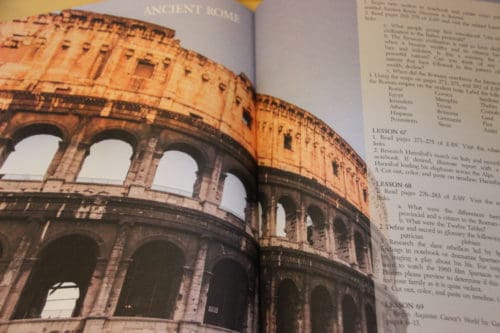
Aside from the reading, she loved working on her handmade map of the ancient world because the mapping portion of the lessons gave her more than just locations to plot. Along with finding a wide variety of cities, rivers, and seas, she mapped out trade and travel routes, and marked where items were found like gems and Cleopatra’s Needles.
This curriculum is easy to customize to fit your family’s needs which is a huge benefit over other history programs for homeschoolers.
Each week, the girls and I look at the study guide and plan out their lessons together. Sometimes we stick to what’s written and other times we make some changes to fit our overall goals.
Here are some of the modifications we made when Marianna was studying ancient history.
- Instead of having her complete each notebooking assignment, sometimes she answered the discussion questions orally. Through our regular talks, it was easy for me to see how much information she was grasping from the reading. I can honestly say that she understood far more than she ever did when we used a more traditional approach.
- There were weeks that the drawing prompts didn’t interest her, so she just skipped them.
- While it was helpful having essay topics there to use, there were times when I let her choose a subject that caught her attention from her reading. Since she got to pick something that she was excited about, she did a better and more thorough job researching and writing her papers.
As a homeschooling parent, you’ll enjoy the fact that planning takes little time with this curriculum whether you use the weekly lessons that are laid out for you or you customize the assignments for your student.
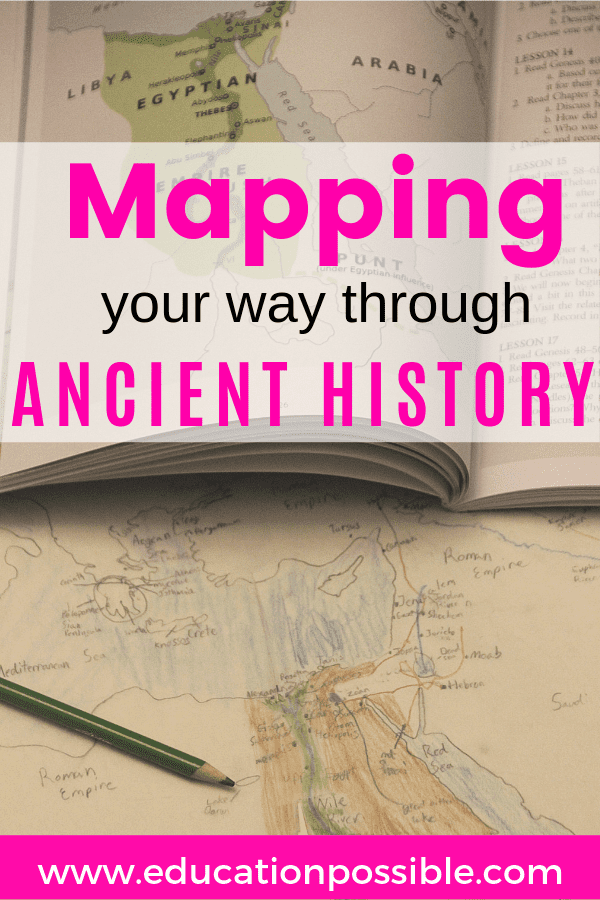
Ancient Civilizations Project Ideas
Personally, I think older kids learn best when they’re engaged, which is why I believe lesson plans should include a wide variety of hands-on activities for ancient history.
The format of the study guide makes it incredibly easy to find the projects within each of the different civilizations. At the beginning of each section, there is a list of 6+ activities that middle schoolers can complete to further enhance their understanding of the time period they’re working on.
As we moved into each new era, Marianna chose projects from the list or we came up with some on our own and we added them to her schedule as part of our lesson planning.
A few of her favorites included:
- Building a stepped pyramid out of sugar cubes.
- Creating a salt dough map of the Nile River.
- Making a mosaic stepping stone.
- Eating Greek food.
I know that projects take a bit more time to plan and complete than just reading and answering questions, but I would encourage you not to skip them. Not only will they add to your teen’s enjoyment of the lessons, they also help them gain a greater understanding of the overall subject.
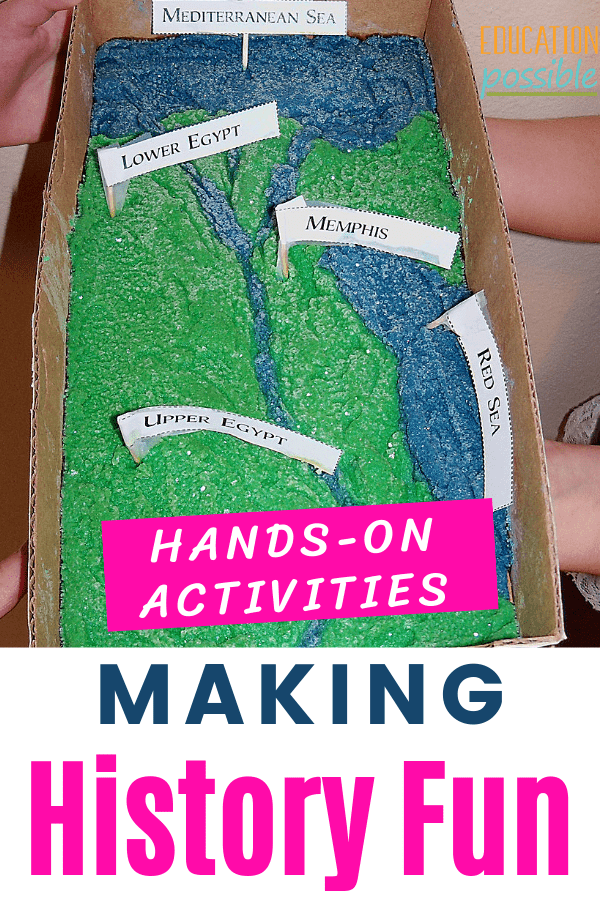
Beautiful Feet Ancient History Pack
Considering the number of books included in Ancient History Intermediate Pack, I think it’s a great value for families, especially if you are using it with multiple students. Plus, if you already own some of the recommended titles, they will work with you so you only end up purchasing what you need.
I am a huge fan of teaching history without relying on textbooks. Beautiful Feet Books shows kids that history is exciting and interesting by using stories found in living books. That’s why we keep using it in our homeschool.
Give it a try. I feel confident that your family will love it as much as we do.
What do you think your teens would like best about a literature-based history program?
